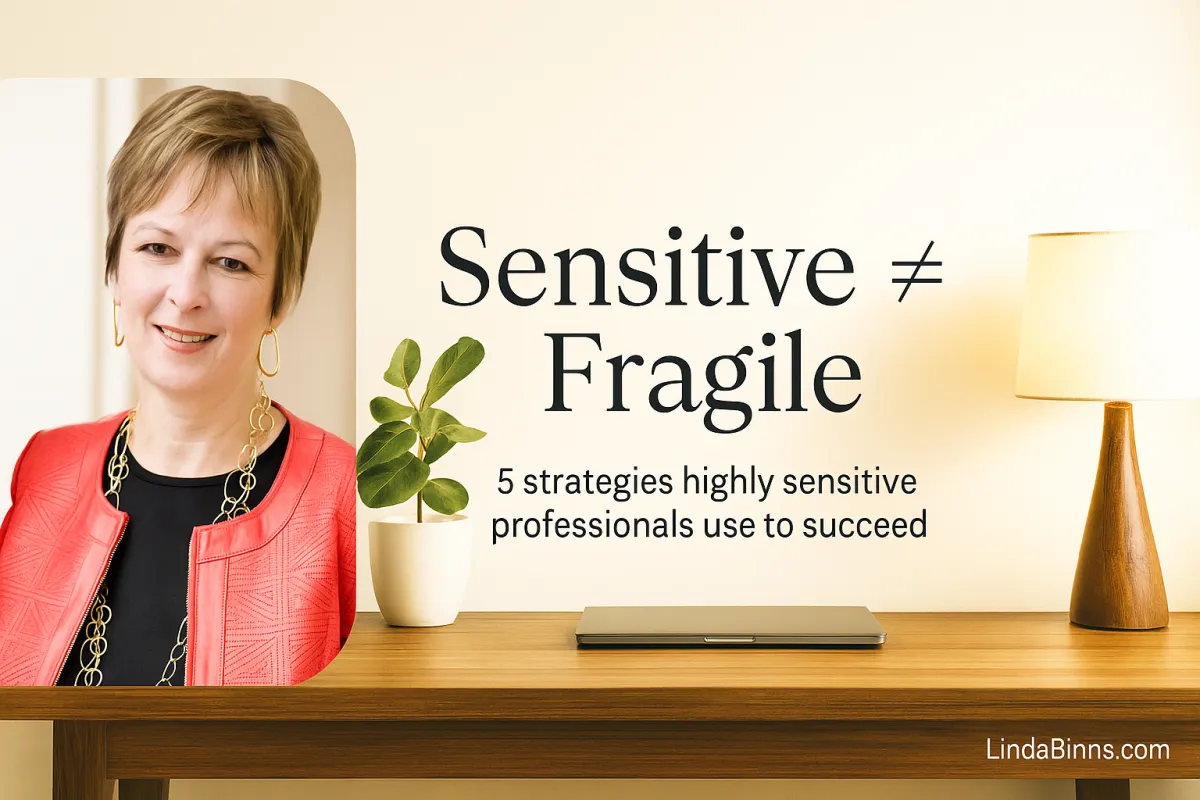
Sensitive ≠ Fragile: 5 Strategies Highly Sensitive Professionals Use to Succeed
Sensitive ≠ Fragile: 5 Strategies Highly Sensitive Professionals Use to Succeed
A note from me
If you’ve ever been told you’re “too sensitive,” here’s the truth: sensitivity is an advantage when you learn to work with your energy. It sharpens intuition, deepens focus, and improves decision-making. As I often say, self-awareness is the key. — Linda Binns
Why sensitivity can be a superpower at work
Highly sensitive professionals (about 1 in 5 people) process more information and notice more nuance. That can mean richer insight—and occasional overload. Success comes from designing your day so stimulation fits your system.
The 5 strategies
1) Self-awareness & acceptance
Name it. You’re highly sensitive. When you own it, you stop fighting yourself and start tailoring your habits—sleep, food, light, noise—to support your best work.
Try this today: Rate the last 3 hours for stimulation (0–10). What helped? What hurt?
2) Know your sensitivity
Map your energizers and drains. Crowds, open-plan offices, harsh lighting, or multi-tasking may spike your nervous system; deep work, natural light, and single-tasking may restore it.
Build a “support kit”: noise-softening headphones, a short walk route, breath cue cards, water, and a gentle “do not disturb” script.
3) Manage (and recover from) overstimulation
Avoid what you can, then recover quickly when you can’t.
Rapid reset (90 seconds): inhale 4 / exhale 6, soften jaw/shoulders, look at a point far away (visual rest), then one small next step.
4) Stop thinking there’s something wrong with you
You don’t need to be less sensitive; you need better alignment. When you stop self-criticism, confidence returns—and so does momentum.
Reframe: Replace “Why can’t I handle this?” with “What would make this feel safer/easier right now?”
5) Help others understand
Teach your team how to work best with you. It’s not personal—they just have different nervous systems.
Scripts you can borrow:
• “I do my best thinking with fewer inputs. I’ll send you a considered answer by 2pm.”
• “Let’s move this discussion away from the open area so I can give you my full attention.”

Micro-habits that compound
• Focus windows: Protect one 60–90 minute “deep work” block during your natural peak.
• Sensory edits: Swap overhead glare for a lamp; reduce visual clutter in your sightline.
• Nature touchpoints: 5–10 minutes outdoors or by a window after meetings.
• Weekly check-in: What over-stimulated me? What helped me recover? What will I adjust?
Weekly starter plan
• Mon: Identify one energizer + one drain; change one thing.
• Tue: Add a 90-second reset between meetings.
• Wed: Move one hard task into your peak window.
• Thu: Share a collaboration script with a colleague.
• Fri: 10-minute declutter of your desk’s “visual lane.”
• Weekend: Nature refill + gentle movement.
You don’t have to be less of who you are to lead and succeed—you just need a structure that fits you. Start with one strategy above and notice how your energy follows.
→ Take my 2-minute Imposter Syndrome / “Good Enough?” Quiz for a tailored next step.
